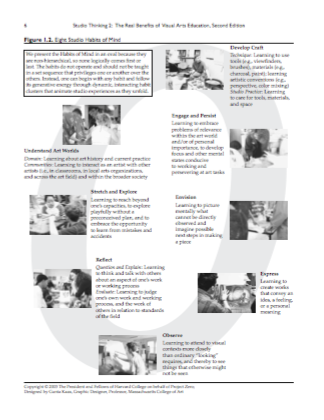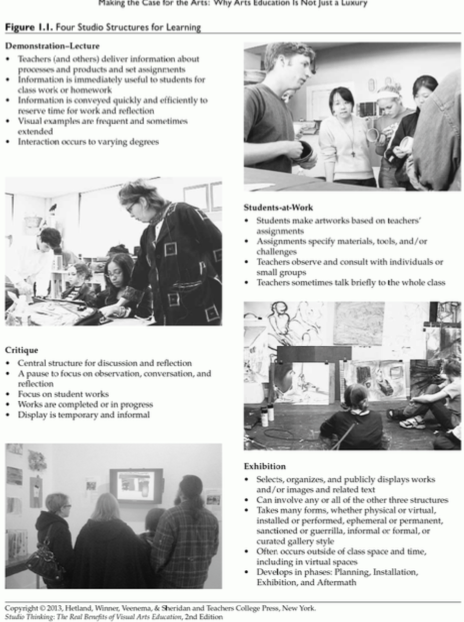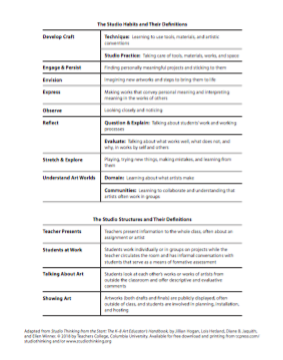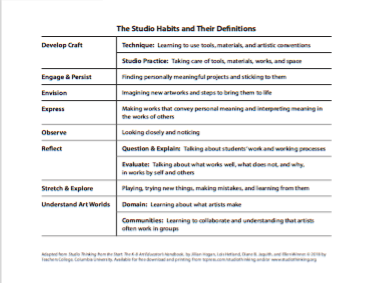Cardboard reference poster in Julie Toole’s classroom; Wilmette, IL
STUDIO THINKING
We believe the arts are vitally important for educating students to be good thinkers. More than 10 years ago, the authors of Studio Thinking: The Real Benefits of Visual Art Education (2007) set out to systematically investigate what it is that visual arts teachers in arts-based high schools teach in their classes, and how these classes are organized.
From there, the Studio Thinking framework was born and is now used in classrooms at all grade levels, all over the globe. In Studio Thinking 2: The Real Benefits of Visual Art Education (2013), the framework and its descriptions were expanded. To showcase how the framework has been adapted by teachers at the elementary and middle school levels, Studio Thinking from the Start: The K-8 Art Educator's Handbook (2018) was written.
From there, the Studio Thinking framework was born and is now used in classrooms at all grade levels, all over the globe. In Studio Thinking 2: The Real Benefits of Visual Art Education (2013), the framework and its descriptions were expanded. To showcase how the framework has been adapted by teachers at the elementary and middle school levels, Studio Thinking from the Start: The K-8 Art Educator's Handbook (2018) was written.
STUDIO HABITS
The framework shines a light on those broad thinking dispositions, or habits of mind, that visual arts teachers teach in their classes. These eight Studio Habits of Mind, which emerged from the original research study, include the following. Note that Studio Habits constantly interact with one another, and we make no claims that any are more important than another. Therefore, we list them alphabetically:
|
Develop Craft (Technique & Studio Practice)
Engage & Persist (Finding Passion & Sticking with It) Envision (Imagining & Planning) Express (Finding & Showing Meaning) |
Observe (Looking Closely)
Reflect (Question & Explain and Evaluate) Stretch & Explore (Play, Use Mistakes & Discover) Understand Art Worlds (Domain & Communities) |
STUDIO STRUCTURES
The second part of the framework, the Studio Structures, describe the organization and interaction of relationships, space, and activities in art class. Some of the structures have been renamed for use at the elementary and middle school level.
|
For High School Classrooms:
Demonstration-Lecture Students at Work Critique Exhibition |
For Elementary and Middle School Classrooms:
Teacher Presents Students at Work Talking About Art Showing Art |
Click here for printable signs about the Studio Habits of Mind
Work on Studio Thinking has been generously funded by J. Paul Getty Trust and The Bauman Family Foundation.



